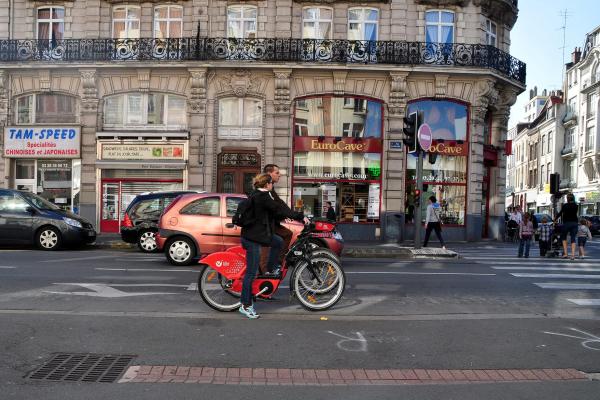Filter by
Case studies (150)
RSS
With urban freight deliveries becoming more common due to a rapid increase in e-commerce, cities are looking for new ways to tackle increased congestion and pollution from increased numbers of light commercial vehicles (LCVs).

In September 2017, the co-funded European Project FREVUE concluded its 4.5-year, large-scale initiative to test electric vehicles (EVs) in real-world urban logistic operations. The trials took place in eight European cities that were selected to demonstrate EVs in a range of climatic conditions

The Transport Strategy 2040, from Greater Manchester (GM) Authority sets a mutually supportive transport and spatial policy framework to effectively accommodate growth to 2040, to meet GM’s aims of economic and social policy.

What exactly do we know about tourist’s mobility behaviour? To give an answer to this query, Horários do Funchal has performed, during last summer, two evaluation campaigns simultaneously at the airport and port of Madeira. Results are already available

The city of Milan has just adopted its Sustainable Urban Mobility Plan after 3.5 years of preparation. The process involved several public consultations under the supervision of a Scientific Steering Committee.

The first SUMP of the city of Turda is well structured with clear planning vision and also concrete measures to be implemented in the short term. It includes objectives, instruments (including financing plans) and measurable targets.

Stockholm is recognised as a pioneer of using urban vehicle access regulations (UVARs) to reduce congestion, improve air quality and promote alternative transport modes within the city centre. The city ranked second worldwide in the Urban Mobility Index

In 2017, France launched a new action plan dedicated to active travel (walking and cycling). Part of this was a Cycling Kilometric Allowance for commuters cycling to work. Those using their own bike receive €0.25 per kilometre cycled and up to €200 annually.

Antwerp is a vital node in the European road network. To improve accessibility and create the right infrastructure for safe transport, several major construction projects have started in the Antwerp region over the last year. In the short term, this has led to a challenging mobility situation

Gent is a vivid, vibrant, and growing city. This has plenty of advantages, but also brings some challenges, as the pressure of motorised traffic on the city keeps on growing. To ensure Ghent’s accessibility and livability in the future, the city council decided to establish a new circulation plan

In addition to developing a Sustainable Urban Mobility Plan, ‘s-Hertogenbosch is updating its Sustainable Urban Logistics Plan (SULP) to incorporate its inner city. By improving and expanding existing logistics measures, the city will create “multi-solution measures” based on a community approach.

Stockholm has the ambitious goal to become one of the world’s leading clean vehicle cities by 2030. To achieve this, it was decided to boost the city’s electric vehicle (EV) charging infrastructure by expanding the existing charging infrastructure and build a fast charging network.

A new and integrated planning approach is required for designing the cities of the future. Utrecht recognised this and adopted the Sustainable Urban Mobility Planning (SUMP) framework.

In recent years, mobility patterns in Malta - especially in the Valletta region - have changed significantly. This is due to various reasons: public transport redevelopment; rising employment; an improved economy; and the increase in (predominantly car-oriented) personal mobility.

As part of its Transport Policy 2015-2020, Krakow developed a transport policy evaluation mechanism, the Conformity Assessment Procedure. It gathers evaluation information to be used throughout the entire SUMP process, and using it involves little financial outlay.

To improve the health of its residents and initiate the changes required to do so, NHS Bristol employed a number of public health experts and developed the influencing skills of such staff at various levels of local government through co-located posts.

In response to public health challenges facing the city, London introduced a Transport Action Plan in 2014. Developed by a Public Health Consultant working in Transport for London (TfL), the city's transport authority, it outlines transport-related measures for improving the health of Londoners.

A town with 3,300 inhabitants, Ljutomer was the first place in Slovenia to prepare a (pilot) SUMP on a 'small' scale. The municipality of the same name (in which the town is located) has a population of 11,400 people.

After a two-year process that involved figures from public administration (politicians and technicians), specialists, stakeholders, committees, associations, and citizens, Parma's Sustainable Urban Mobility Plan (SUMP) was approved in March 2017 by the City Council.

The city of Burgas started the implementation of a bike-sharing service in 2012 and was the first Bulgarian city to include the practice as part of an integrated urban mobility policy.
